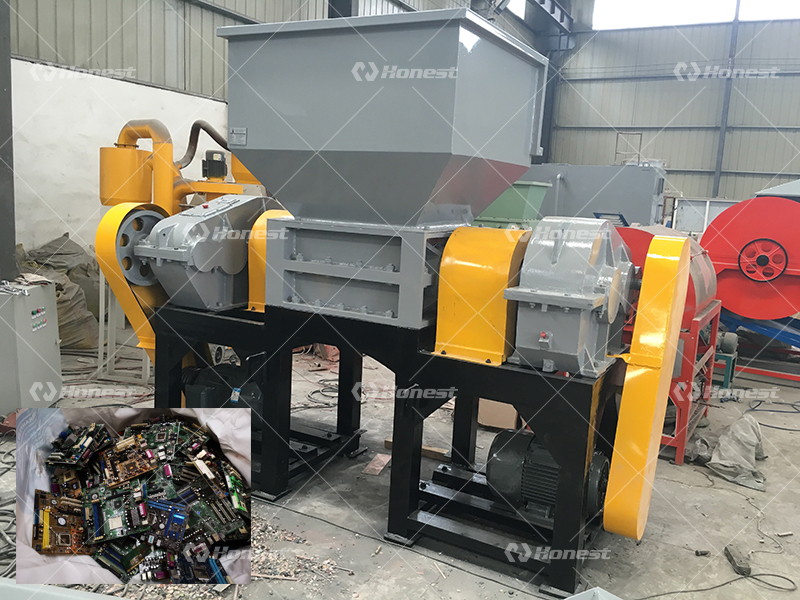Small Shredder to Handle PCB Boards
The small shredder to handle PCB boards is a specialized machine designed for the efficient processing of electronic waste. Printed Circuit Boards (PCBs) are essential components in electronic devices such as computers, mobile phones, and home appliances. However, they also generate large quantities of waste during manufacturing and disposal. A small PCB shredder provides a cost-effective and eco-friendly solution for recycling valuable materials while reducing environmental pollution.

1. Function and Purpose of Small PCB Shredder
The main function of a small PCB shredder is to crush and downsize circuit boards into smaller, manageable pieces for subsequent separation and recovery. Shredding improves the efficiency of sorting processes like magnetic and electrostatic separation, allowing valuable metals to be easily extracted. This compact shredder is perfect for small recycling facilities, laboratories, and e-waste processing workshops, where space and capacity are limited. It reduces labor costs, prevents manual hazards, and promotes green recycling by preventing the release of toxic substances during PCB disposal.
2. Applicable Materials and Typical Applications
The small shredder to handle PCB boards is suitable for various electronic waste materials, including:
-
Computer motherboards and laptop mainboards
-
Mobile phone circuit boards and communication panels
-
Home appliance control boards
-
LED driver boards and power supply units
-
Electronic components from vehicles and machinery
In addition to PCBs, the shredder can also process connectors, cables, small plastic housings, and electronic modules. It is widely used in e-waste recycling centers, research institutions, and small-scale production lines, helping businesses efficiently manage and recycle electronic scrap.
3. Structure, Features, and Working Principle
The small PCB shredder consists of a sturdy steel frame, rotating blades, gearbox, electric motor, and control panel. Its double-shaft cutting system operates at low speed and high torque to tear, shear, and crush the PCBs into fine fragments. The process typically includes:
1.Feeding – Waste boards are placed into the hopper.
2.Primary Shredding – Blades cut the boards into smaller pieces.
3.Secondary Shredding – Further size reduction to uniform fragments.
4Output and Collection – Shredded materials are discharged through a screen for sorting.
Key features include wear-resistant alloy blades, overload protection, low noise, and easy maintenance. The design ensures safety, stability, and long service life even under continuous operation.
4. Recycling Benefits and Economic Value
After shredding, PCB fragments undergo physical and chemical separation to recover valuable metals such as copper, aluminum, gold, and silver. The non-metallic parts, mainly fiberglass and resin powder, can be reused in building materials, composite boards, or insulation products.
The recycling process offers multiple advantages:
-
Environmental protection by reducing electronic waste pollution.
-
Resource recovery that saves raw materials and energy.
-
Economic benefits from the resale of recovered metals.
-
Support for circular economy through sustainable material reuse.
In conclusion, the small shredder to handle PCB boards is an essential machine for efficient and eco-friendly e-waste recycling. Its compact design, reliable performance, and high recovery potential make it ideal for small-scale facilities seeking to transform discarded electronics into valuable resources. By adopting such technology, businesses can achieve both environmental responsibility and economic profitability.



